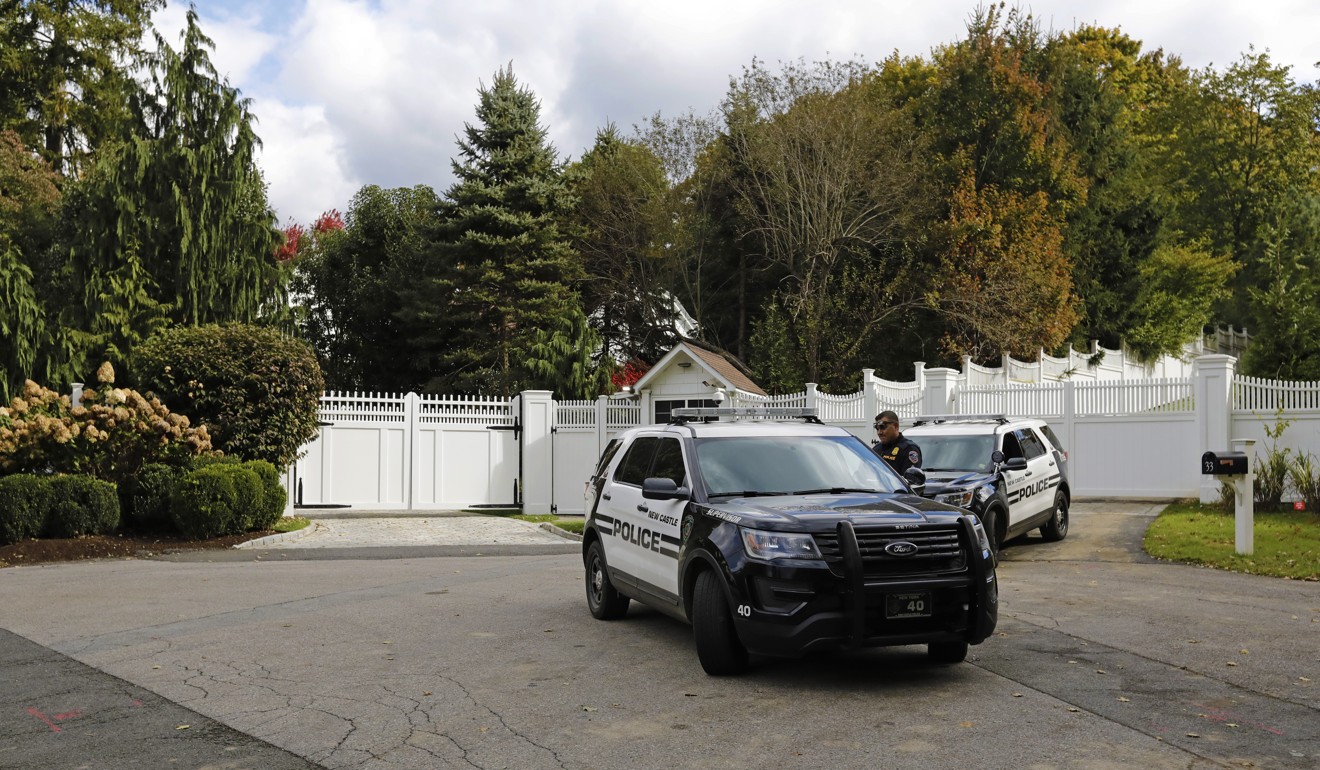The discovery of pipe bombs mailed to prominent Democrats, CNN and a liberal billionaire has put the United States on edge and sent law enforcement officials scrambling to prevent any more packages from reaching their targets.
The hunt for a serial mail bomber began late Tuesday night when Secret Service personnel conducting standard mail screenings found a pipe bomb inside a plain manila envelope with a bubble-wrapped interior addressed to former secretary of state Hillary Clinton.
A similarly packaged bomb was found hours later in mail addressed to former president Barack Obama.
Neither bomb got close to its intended target, and neither contained a written message, according to law enforcement officials.
At least seven suspicious packages were sent in New York, Washington and Florida, including to prominent African American Democrats, Obama’s attorney general Eric Holder and Maxine Waters, a California lawmaker.
Waters was sent three packages, according to the FBI.
The envelopes were marked with computer-printed address labels. Each listed Debbie Wasserman Schultz, former chairwoman of the Democratic National Committee, as the sender.
Those targeted were a virtual litany of US President Donald Trump’s favourite subjects of criticism in tweets and at campaign rallies, from his “lock her up” slogan for Clinton to his denunciation of CNN as “fake news”.
From the White House, Trump initially appealed for unity, saying “acts of political violence” have “no place in the United States”.
“Those engaged in the political arena must stop treating political opponents as being morally defective,” he later told a campaign rally in Wisconsin, before switching his criticism back to the media.
The attacks began on Monday when police “proactively detonated” a pipe bomb found at a residence in New York’s suburbs owned by billionaire philanthropist and Democratic donor George Soros, who’s often portrayed by conservatives as a secretive bankroller of liberal causes.
Officials described the devices as attempted acts of terrorism and cautioned that the number of bombs – and intended victims – could grow.
“This investigation is of the highest priority for the FBI,” FBI Director Christopher Wray said.
One such package used an incorrect address for Holder, and it was “returned” to Wasserman Schultz’s office in Sunrise, Florida, where it was intercepted, according to officials.
Authorities do not believe she had anything to do with the packages and think she was a potential victim.
The bomb addressed to former CIA director John Brennan was found in the mail at CNN’s office in New York.
Since leaving the government, Brennan has been an outspoken critic of Trump; he is an on-air analyst for NBC News and MSNBC, rather than CNN.
The Secret Service intercepted the package addressed to Clinton at the home she shares with her husband, former president Bill Clinton, north of Manhattan on Tuesday, and a second package addressed to Obama’s Washington home on Wednesday.
Law enforcement officials described the devices as PVC pipes stuffed with explosive material and shards of glass.
They were wrapped in electrical wire and tape, but they provided no detail on how they would have been detonated.
Malcolm Brady, a former Bureau of Alcohol, Tobacco, Firearms and Explosives official who spent decades investigating bomb suspects, said federal agents were carefully poring over the packages for any clues they may hold as to the identity or location of the sender.
“You have to be extremely careful when you examine this stuff, because a piece of tape could have a fingerprint on it,” Brady said.
Most mail-bombing suspects are “loner types”, said Brady, who added he doubts this bomber made a mistake when he used a bad address for Holder.
“That looks like an intentional manipulation of the system, to try to get it to go to the congresswoman (Wasserman Schultz). I strongly suspect he wanted that package to go to her. That suggests he’s really focused on her.”
The US Postal Service operates a sophisticated imaging system that photographs the outside each piece of mail processed across the country and can be used to determine the specific location of where it was sent.
That’s how federal officials were led to a woman who sent the poison ricin through the mail to Obama and then-New York City Mayor Michael Bloomberg in 2013.
The envelopes and packaging materials themselves will also be closely scrutinised.
“It will be a treasure trove of forensic evidence,” said Anthony Roman, a private security and investigations consultant.
“As human beings, we are filtering off our DNA everywhere we walk, everywhere we sit.”
Even the most careful bomber is likely to leave behind genetic material that could be used to identify them, especially traces of sweat, saliva or skin cells. There may also be fingerprints or hair.
But it may not be that simple to catch the culprit.
There have been times, such as with the recent spate of bombings in Austin, Texas, as well as with the notorious Unabomber, when each device had a different “signature” in an attempt to throw off authorities or as the person making the devices tested and finessed their technique.
The Washington Post, Agence France-Presse, Associated Press, Reuters

